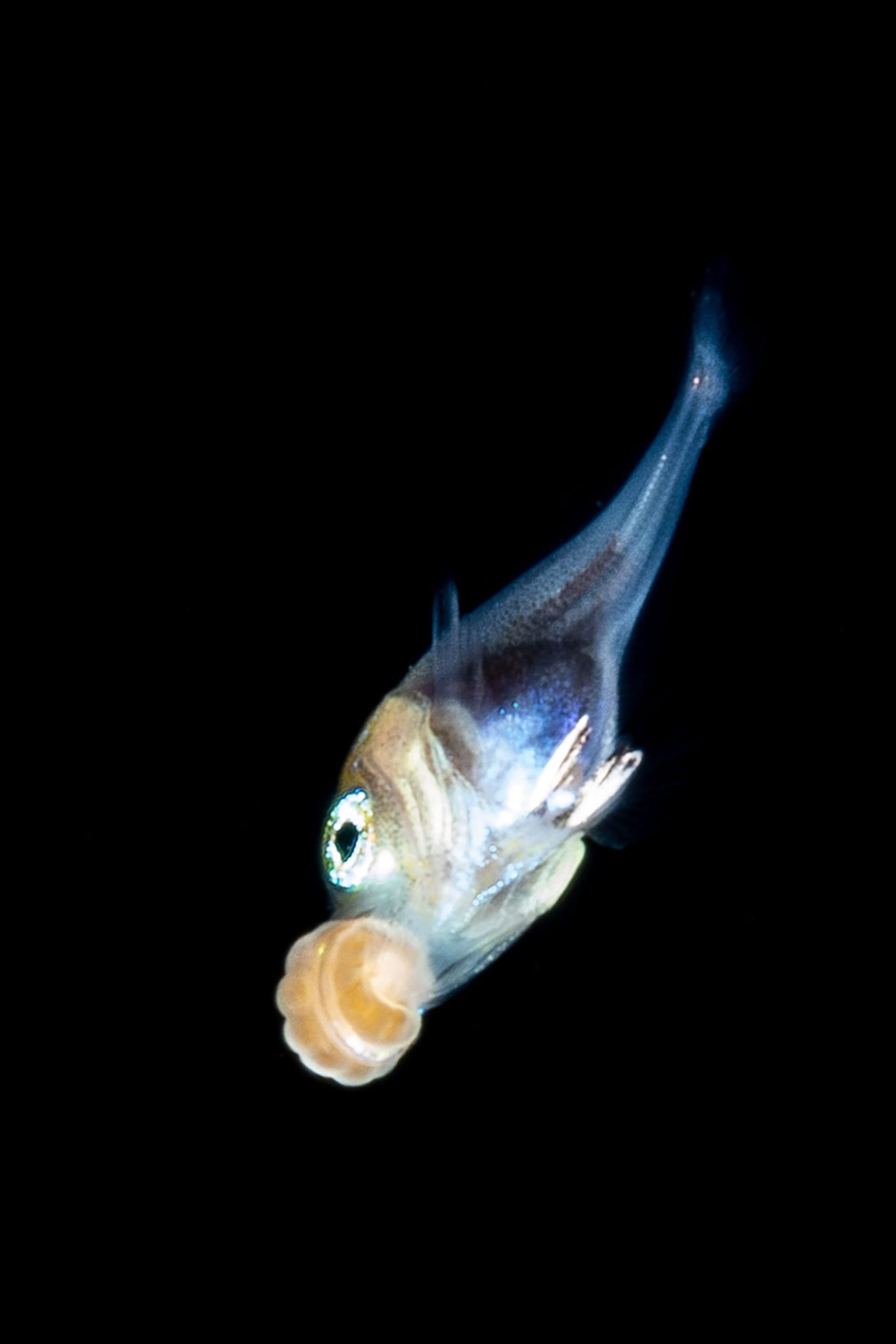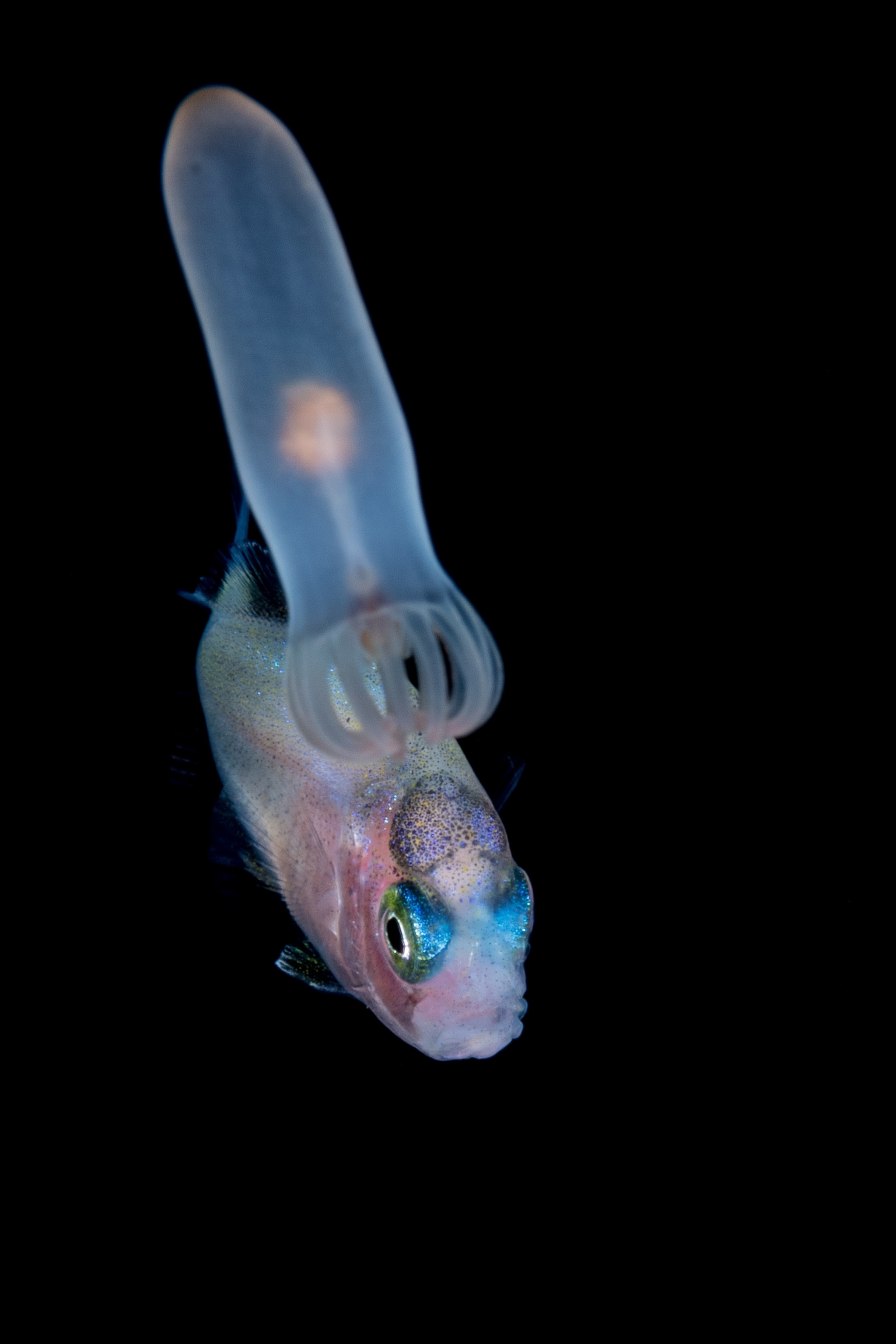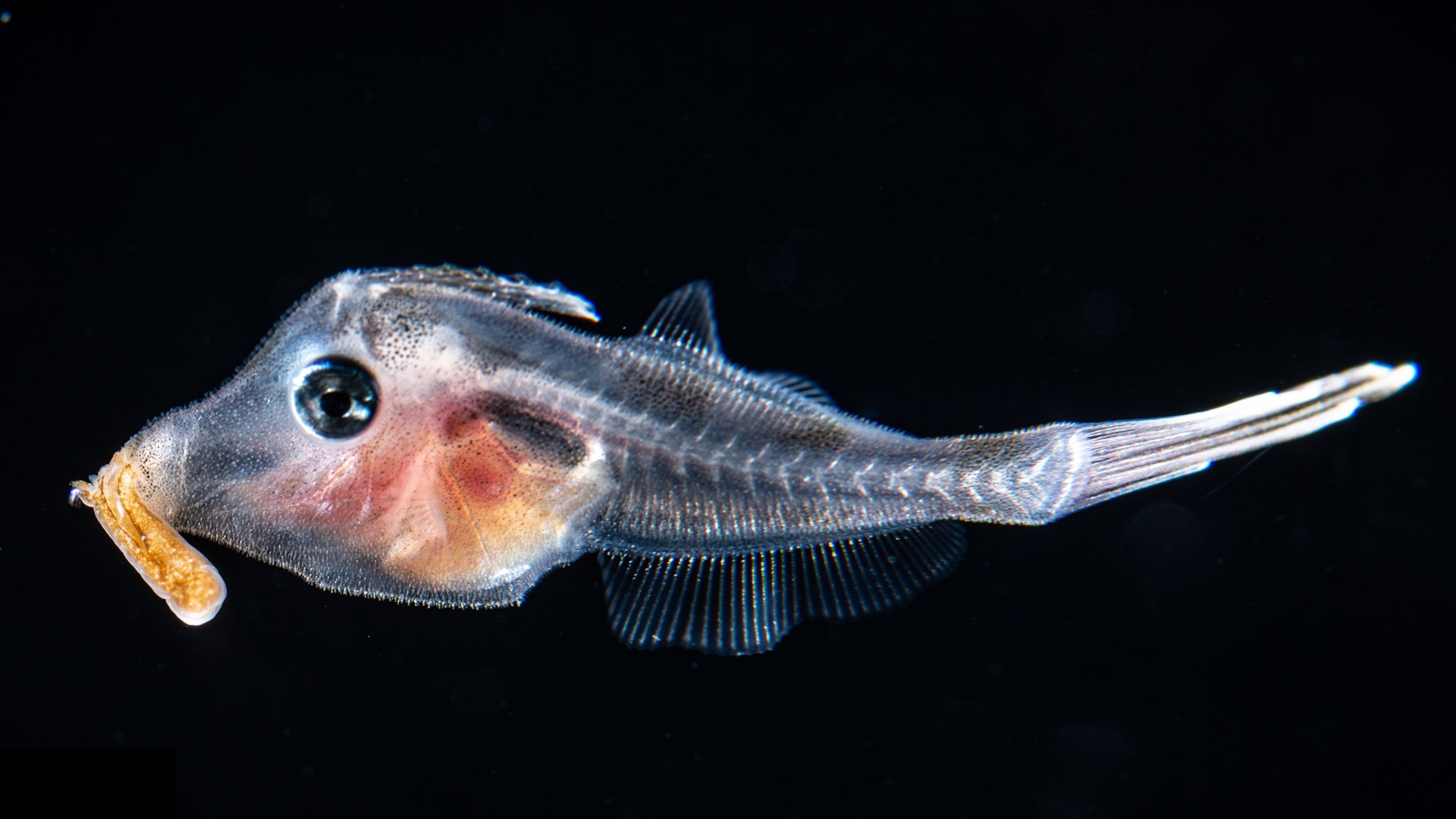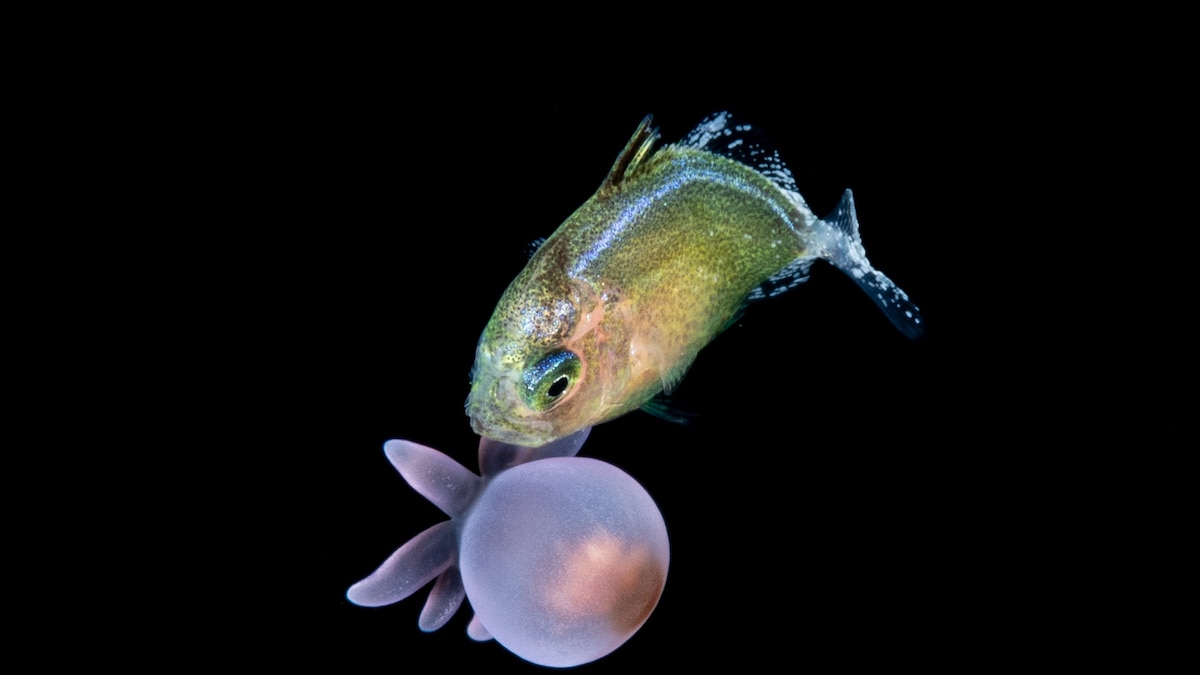Blackwater divers plunge into the ocean in the dark of night and photograph what they illuminate with flashlights or other lights. Many of the animals featured in blackwater divers’ photos are drawn to the light and they are often small—less than an inch long. “It’s what I think of as almost a primordial sea,” Milisen says.
Afonso’s team examined photos that divers snapped at depths of 26 to 50 feet during scuba dives off the coasts of Florida and Tahiti. In one, they saw a filefish holding a yellow larval anemone in its mouth. In another, a juvenile jack swam close to young anemones, while a different scene showed a young driftfish doing the same thing. And a pomfret seemed to be riding another creature, held between the fish’s fins. This blobby animal was an unidentified anthozoan, a member of the group that includes anemones.

A pomfret of the Bramidae family is seen with a Zoanthid larva.
Linda Ianniello

A fish is seen with the pelagic larval stage of a tube anemone of the Ceriantharia order.
Linda Ianniello

An Aluterus fish is seen biting down on a small yellow larva.
Rich Collins
Why do they do it?
In a featureless environment with nowhere to hide, the fish could be defending themselves with anemones, the researchers suggest. Adult anemones have stinging cells, and at least some larval anemones are toxic. In the case of the jack, the diver noticed that the fish seemed to try to keep the anemone between itself and the diver. “The fish hides behind the anemone using it as a barrier,” Afonso says. “That’s our interpretation.”
Researchers have long known that fishes hang around other stinging creatures, especially jellyfish. Scientists have made repeated observations of fish swimming near them, schooling around them and even sheltering in their tentacles, says Jeff Leis, a fish biologist at the University of Tasmania in Hobart, Australia who wasn’t part of the study. In February 2025, the study authors shared photos of fish with jellyfish hanging out of their mouths in the Journal of the Ocean Science Foundation. And some fish even appear to mimic jellyfish. But it’s not clear yet how common this sort of interaction between fish and anemones in the open ocean is, Leis says, given that only a few species were reported here.
